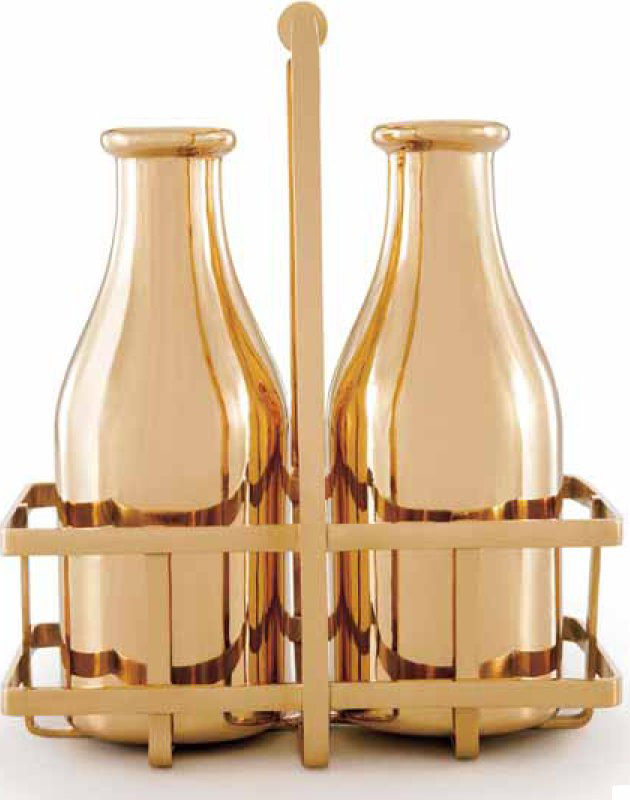Brass is a material that is trapped in a cultural time warp. Think of brass and you don’t think of modern aesthetics or materials that fulfil specific needs in contemporary life. Instead, the metal with a colour of warm brown sugar suggests an ancient time, where the acoustic properties of cartridge brass were utilized to make a huge range of musical instruments, from bells to trumpets. Like silver, its oxidation and subsequent need to be polished also creates satisfying rituals around the use of this metal.
Straightforward brass is approximately 65 per cent copper with no more than 40 per cent zinc. Like many other metals, brass is not a single material but a vast family, each with differing properties. Some of the brasses in this group include jewellery bronze, red brass, yellow brass and gilding metal. Other main brass groups include leaded brass, casting brasses and tin brasses. Some brasses are known as bronzes, this is a term that usually applies to copper alloys, which have a main alloying element of tin or zinc. Bronze used for casting statues has approximately 10 per cent tin, about half the amount used for tougher engineering applications such as turbine blades. The addition of tin produces harder and stronger materials.
Image: Studio Job Bottle Rack vase

Key features
•Excellent corrosion resistance
•Good strength and ductility
•Versatile processing
•Inexpensive (cheaper than copper)
•Very good electrical conductivity
•Good machinability
•Antimicrobial
•Resistant to nuclear radiation
•Recyclable
Sources
Brass and bronze consist mainly of copper and Chile is one of the major sources.
Cost
£2.50 ($3.85) per kg.
Sustainability issues
Brass is often made from recycled scrap, to the point that in the UK brass manufacturers use almost 100% brass scrap. As one the main ingredients of brass, copper production amounts to approximately 16 million tonnes a year and exploitable reserves are around 690 million tonnes. Also, according to the US Geological Survey in 2011, zinc production was around 12,000 tonnes per year with current reserves at 250,000 tonnes.
Production
Brass can be cast using various methods including sand and die-casting. Bronze in particular is a great material for casting due to its low viscosity, which allows it to flow into complex shapes with fine details. It can also be forged, extruded, applied as a coating using the electroforming process and is readily available in sheet, rod, tubing and solid forms, where it can be die-stamped, rolled, press-formed, machined, impact extruded and spun. In terms of joining, brass can be soldered, brazed and welded (although welding is not straightforward).
Typical applications
Brass alloys are used in a large range of applications including electric plugs, lightbulb fittings, medical instruments, cable glands, bearings, gearwheels, household and plumbing fittings, aircraft, train and car components. A common application of brass is in wood screws, which take advantage of its excellent corrosion resistance. As with copper, it’s used in applications where antimicrobial properties are required, particularly in hospitals.
Derivatives
–Nickel silver brass
–Aluminium bronze
–Silicone bronze
–Manganese bronze
| + | – |
|
–Excellent for casting –Suits a variety of production methods –Radiation resistant –Strong and ductile –Recyclable |
–Can suffer from ‘old-fashioned’ associations –Welding can be difficult due to the zinc content |
